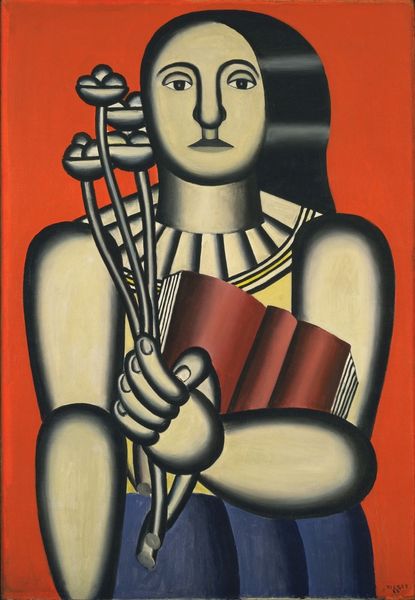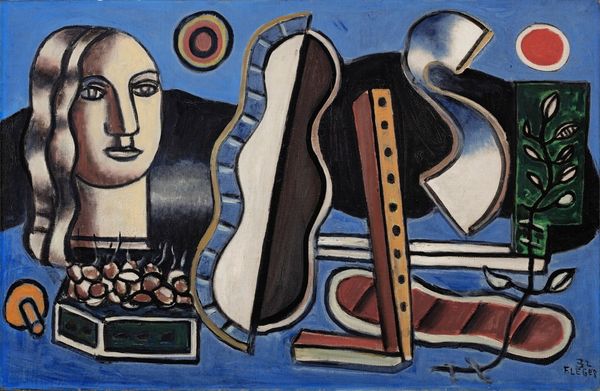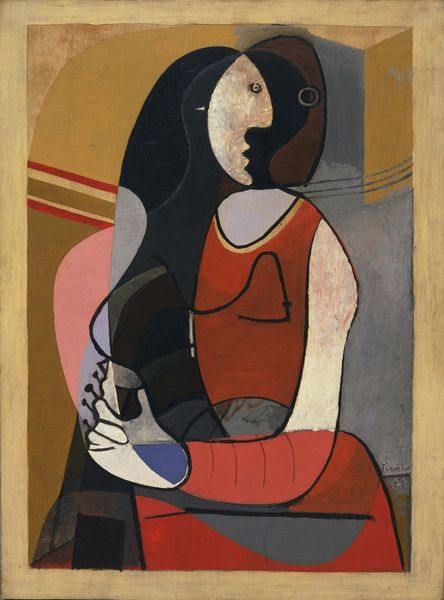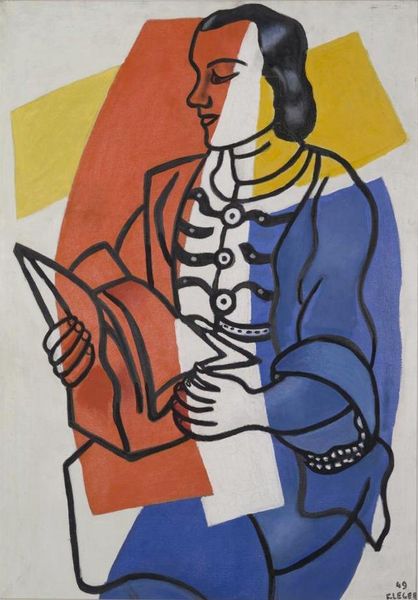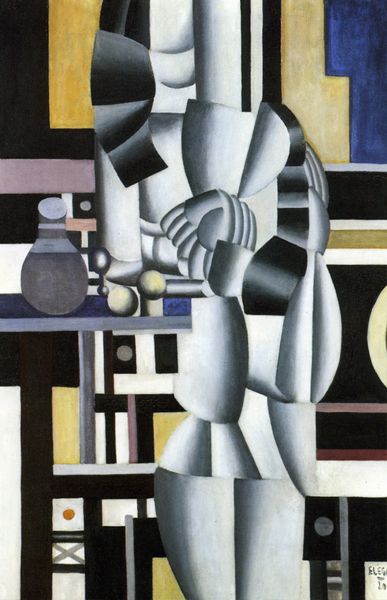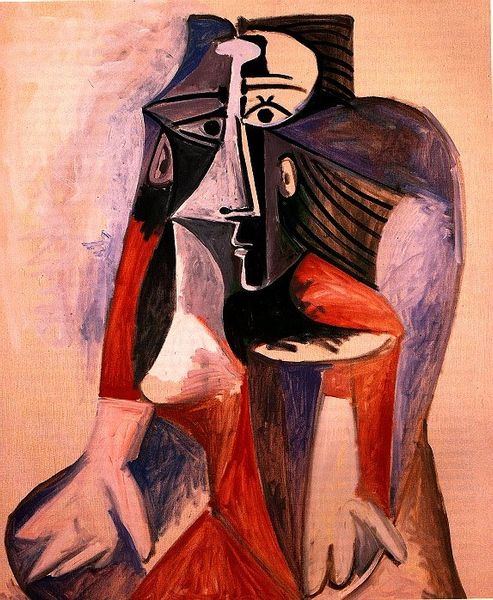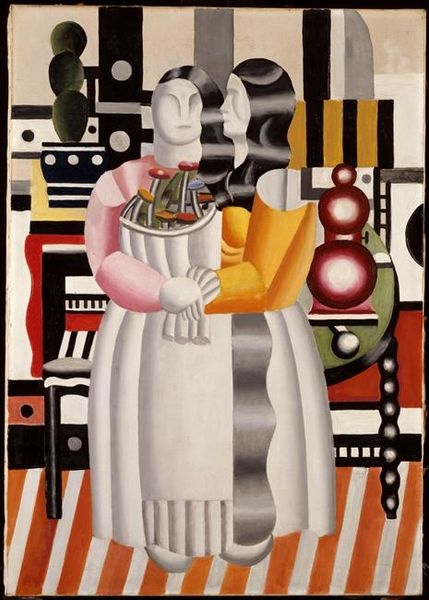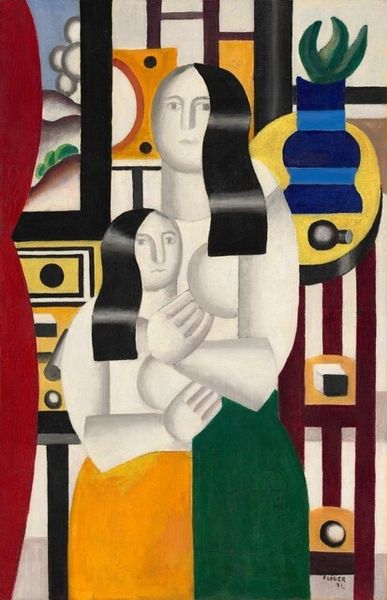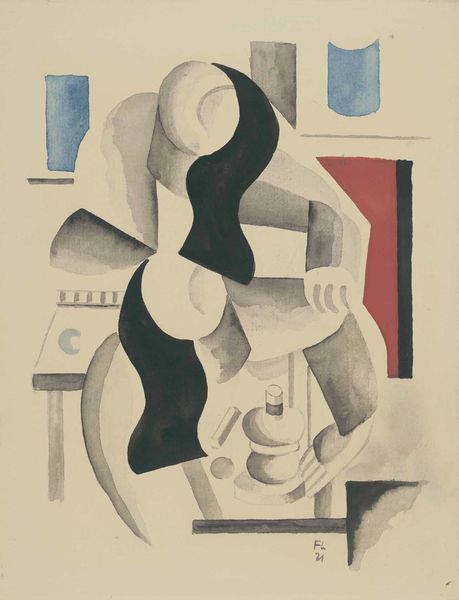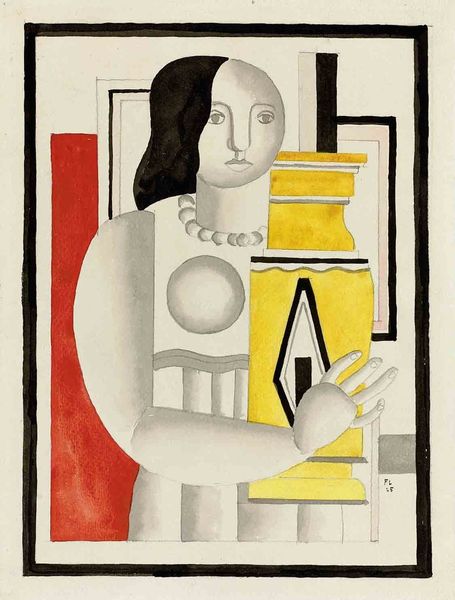
mixed-media, painting
#
portrait
#
cubism
#
mixed-media
#
painting
#
caricature
#
geometric
#
abstraction
#
history-painting
#
portrait art
#
female-portraits
#
modernism
Copyright: Fernand Leger,Fair Use
Curator: The image we’re looking at is entitled "The study for the City Centre", a mixed-media work realized around 1927 by Fernand Léger, one of the foremost figures in French modernism. Editor: First glance? Monumental! Like a modern-day caryatid holding up not a building, but a… stylized chunk of civic pride? I'm getting a stoic, almost robotic vibe from her. Curator: Léger's work is heavily influenced by his experiences in the First World War. After the war, he wanted to create an art that was both modern and accessible, an art that reflected the dynamism and optimism of the Machine Age. You can see echoes of that in the simplified forms, the bold colors. Editor: Right, the simplification is almost aggressive. Look at the cylindrical legs and the face, all planes and hard lines. It feels…industrial. Yet there’s something intensely human trying to break through, wouldn’t you say? The eyes, although stylized, are so direct. Curator: Exactly. He was exploring the relationship between the human figure and the mechanical world. Léger believed art should reflect the lives of ordinary people and the changing urban landscape. This portrait certainly reflects those sensibilities. He presented ordinary individuals to a grand effect. Editor: That red…thing…she’s holding – is that supposed to be a building? Or a monument? It's so angular, like a geometric totem. It is indeed a study of urban constructivism! Curator: It's open to interpretation, of course. It seems symbolic of the modern city— fragmented, rebuilt. This image of “modern woman” acts as a cornerstone to the burgeoning city, perhaps reflecting the shift towards recognizing female roles in urbanization during the 1920s. Editor: I like that reading a lot, actually. Despite the cool colors, hard lines and general stillness I’m finding it to be almost moving. The rigid and fragmented are not separate, but intrinsically humanized. Curator: So, we begin to interpret the shifting place of women within French society, with new public visibility during this transformative epoch of industry. Editor: Léger wasn't afraid to challenge conventions. This portrait of the era truly captured that shifting cultural landscape. Thank you for adding that layer! Curator: Indeed. These paintings served as visual touchstones that made grand points about ordinary living. Thank you, it was my pleasure!
Comments
No comments
Be the first to comment and join the conversation on the ultimate creative platform.
